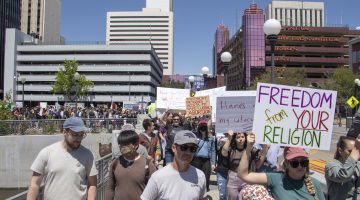Staff Report
Last Wednesday, Burning Man tickets went on sale, and 70,000 people hopped online to scoop up their $390 keys to Black Rock City. Later that afternoon, 40,000 would-be Burners closed their browsers empty-handed as the 30,000 tickets available were quickly snatched up in under an hour after the sale began.
Nevada’s Burning Man, a festival in the Black Rock Desert north of Reno, is widely recognized for its emphasis on self-expression and art. Since it came to the desert in the 1990s, its popularity has continued to grow. In 2015, the event saw record attendance at more than 67,000. The organizers have capped the event at 70,000 participants, but by 2017, that cap may rise according to a 2015 Reno Gazette-Journal article by Burning Man reporter Jenny Kane.
The festival sold out for the first time in its 25-year history back in 2011, which led to The Washington Post calling the counterculture phenomenon “mainstream.”
Today, selling out tickets is not an unfamiliar scenario. During the past three years, individual sales of both tickets and vehicle parking passes have ended within an hour of opening to buyers.
In last year’s individual sale recap, the official voice of the Burning Man organization, aptly named Burning Man, wrote that for every one person who’s lucky enough to purchase a ticket, “there are nearly three more who were registered for the sale but didn’t reach the front of the queue before tickets were sold out.”
According to Burning Man organizers, the system behind the whole process works, but people have voiced concerns over some problems with buying tickets. Last year, Burning Man’s official journal says the event’s ticket demands were about double what the supply is. When sales opened, around 80,000 people were processed in milliseconds, and those people were placed in lines according to when they clicked the ticket link.
At that time the main objective was to be one of about 20,000 at the front of the line. Each person could purchase a maximum of two tickets, making the struggle for one of 40,000 even more stressful. This year, with more than 70,000 people in the system and only 30,000 tickets for sale, the race remained competitive.
Some have criticized the system, claiming there are ways to sneak into the front of the line, while others claimed to have skipped the waiting room this year. That raised concerns regarding glitches in the system.
Although Burning Man wrote that 200 people managed to sneak past the line last year, they did not acknowledge any glitches in the system during sales this year. Jim Graham, a Burning Man spokesperson, told the RGJ that the process “seemed to go as planned.”
Although the initial tickets are gone, there is hope for those seeking other options. The Secure Ticket Exchange Program is a safe place to buy resold tickets without having to worry about scams. Another option is the OMG Sale, which like the individual sale is first-come, first-served. During that event in August, 1,000 tickets will go on sale for $390, along with 1,250 $80 vehicle passes. During the sale, up to two tickets can be purchased at a time.
Burning Man officials advise against buying tickets from random strangers, but urge Burners to remember that Black Rock City is only one of more than 60 Burns worldwide.
For those still looking to head to Black Rock, this year’s spectacle, themed after the Italian Renaissance of the 15th and 16th centuries, will take place from Aug. 28 to Sept. 5.
The news desk can be reached at jsolis@sagebrush. unr.edu and on Twitter @TheSagebrush.









